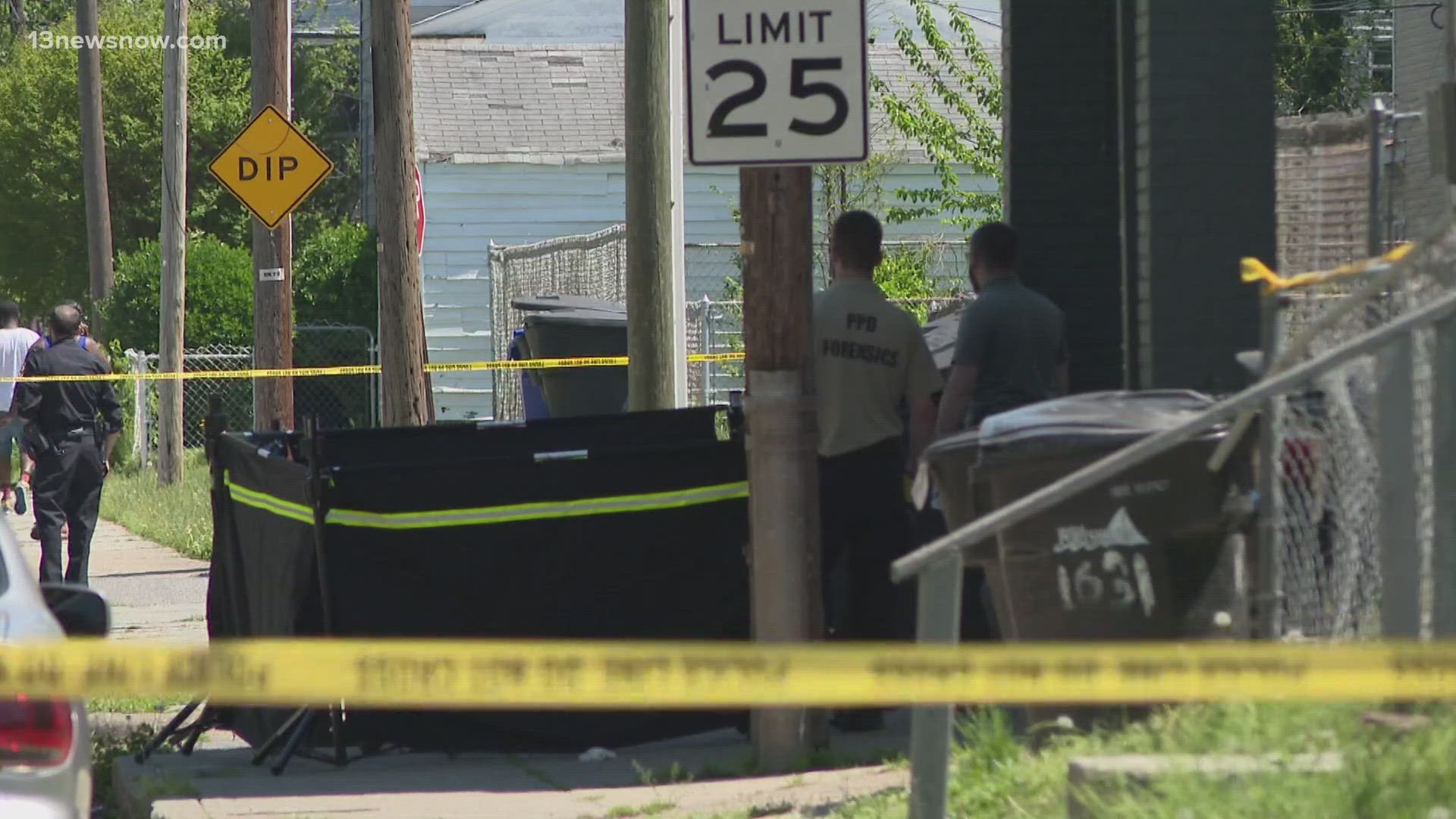Ciscoe Morris from Gardening with Ciscoe offers suggestions for safe gardening with dogs, and introduces us to his new puppy Izzy.
I love gardening and I love dogs. You can have a beautiful garden and healthy pups, but there are some things you should do before you bring your new family member home.
1. Before you bring a puppy home, determine where little Fido will be allowed to romp and play, and which areas are off limits.
I made the mistake of bringing my previous two puppies, Fred and Ruby home before I figured out how to keep them out of my key gardens filled with rare and pricey plants. As an emergency measure I put up a temporary plastic fence. Fred was a good boy and respected the fence, but Ruby saw it as a challenge. She liked to run through it at full speed, leaving the perfect silhouette of a puppy, including the shape of her Ross Perot like ears. I must complement her on her good taste, however. She always found the rarest and most expensive plants to rip out and toss gleefully into the air. We opted to construct a cedar fence to keep Fred and Ruby out of the vegetable patch and my collector’s garden. The fence we designed is constructed of only horizontal rails. It allows for an unimpeded view of the plants, while adding an elegant touch to the garden. Although the fence is only 3 feet tall, it was easy to train the dogs not to jump it.
2. Give your pups some gardens they can play in.
Don’t fence your dogs out of every garden area. Give them a few planted areas where they can play hide and seek. Plants such as hardy fuchsia, red twig dogwood, dwarf conifers, ornamental grasses and pretty much any herb such as salvia, rosemary and lavender are ideal for pet-friendly plantings because they are non toxic, flexible, and strong enough to bounce back after being trampled by doggy paws. Besides a place to play, dogs need ‘rump spots’ – a place in the shade where they can dig a cubbyhole for an afternoon siesta. The problem is that some dogs siesta in a new spot every day. To deter this, place attractive, sizable stones among the off-limits plants to make it an uncomfortable place to lie down.
3. Remove potentially toxic plants.
Much as we want to have a beautiful garden, the most important concern is to make sure our gardens are safe for your pups. A good many plants are poisonous, especially to puppies who tend to chew everything in their path. Ask your vet for a list of toxic plants and remove them from pet areas before you bring your puppy home. Ask for a list of toxic houseplants while you are at it. A good number of them are harmful to dogs if they chew them. Mushrooms can be a problem as well. There’s no product that kills mushrooms, so during mushroom season in spring and fall, go out and pull them to remove them from any areas where pooches have access.
4. Remove plants that could harm eyes.
Remove any plants with prickers, such as rose, barberry and Pyracantha, or sharply pointed plants such as yucca that could cause serious eye injury.
5. Don't use toxic pesticides where pups hang out.
Don’t use toxic pesticides where pups hang out. It doesn’t mean you have to allow pests to decimate your garden. Use pesticides if you need to, but choose ones that are the safest for your pets. The newer iron-phosphate based slug baits such as ‘Sluggo’ ‘Worry Free’ and ‘Escargot’ have become popular because they are significantly safer to use around pets than are the ones that contain Metalehyde, but even these products can be harmful to dogs, especially if they eat a fair amount of it. Read and follow the directions on the label, especially regarding the amount to apply, and never create piles of it. Slug bait can be applied under cover of a stepping stone held up by smaller stones. Use extra caution regarding where you store the bait. There are reports of pets opening cabinets, knocking packets off high shelves, even digging up piles of pellets that were evidently buried in an effort to get rid of them. If you can’t keep the pooches out of an area where slug and snail controls are needed, maybe it’s better to go back to using beer or some of the traditional pest control methods everyone used before slug baits were available. Just remember to shout ‘el kabotski’ as you stomp. Never apply weed and feed to control weeds on your lawn. Research undertaken by the National Institute of Cancer found potential health problems in dogs, where these products are used. Pull lawn weeds or apply vinegar on a hot sunny day rather than using chemical weed control products. A good way to remove dandelions is to blast them with vinegar on a hot sunny day.
6. Let the pups have the lawn.
Don’t expect to have a perfect lawn if you have pups. It’s a waste of time to repair trails where the dogs constantly walk back and forth, and it’s equally futile to repair damage caused by play on wet or shady areas. Dead pee spots are going to happen, especially if you have a female dog. If you have a male, try planting a sacrificial juniper next to the lawn.
7. Give your pup the attention it needs.
It’s a big mistake to make dogs live outside or to lock them outside for long periods. Provide a doggy door so they can go in and out as they please. Even with a doggy door if you must leave the dog home along for long periods you’re asking for trouble. A pup that is alone all day long will figure out ways to entertain itself. Your garden, and quite possibly your furniture, could pay the price. Consider taking Fido to doggie day care or hire a dog walker to visit once a day to give the pooch some exercise and attention.
8. Love the living tweetle out of your pup.
If you love your pup, half as much as I love little Izzy, you won't care if she does a bit of damage in the garden. No matter how well you plan, pups will get into mischief. When that happens, just look into those loving brown eyes and you’ll forget all about that $500 irreplaceable Wollemi pine they just trashed. Hey, it’s only a plant!


